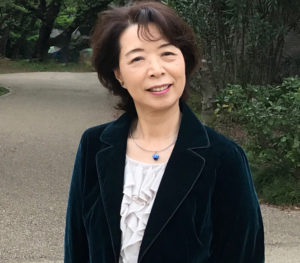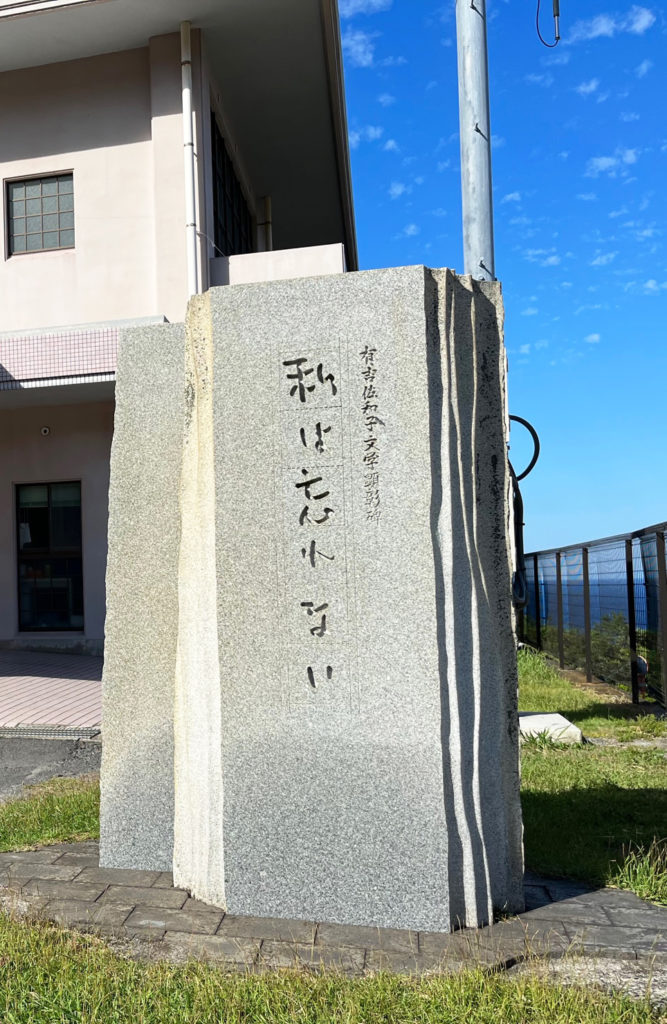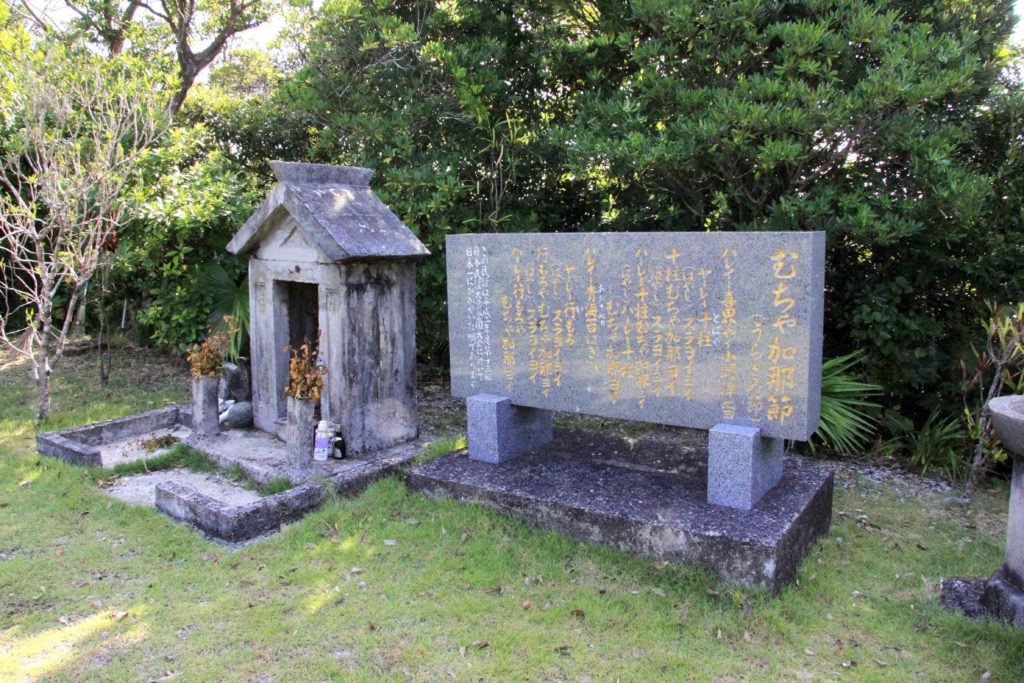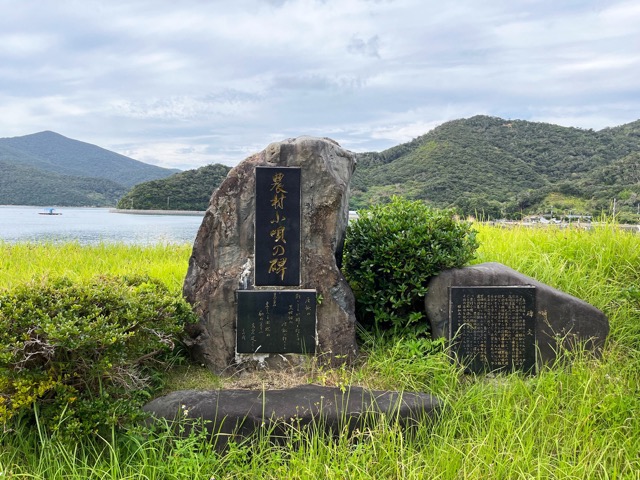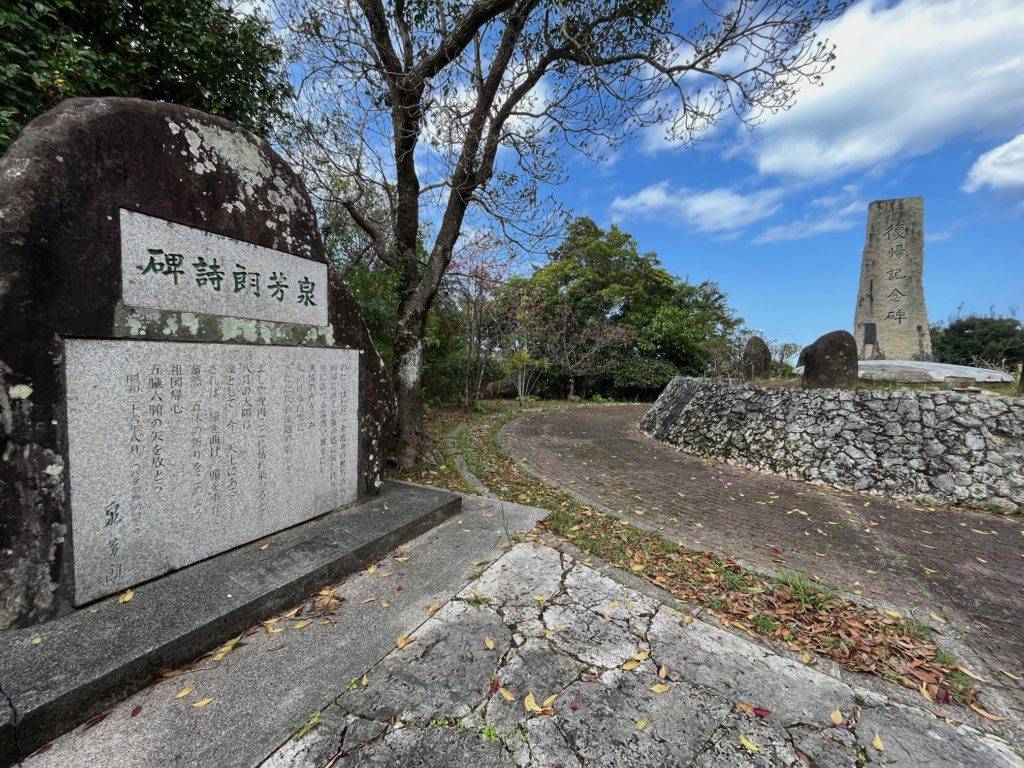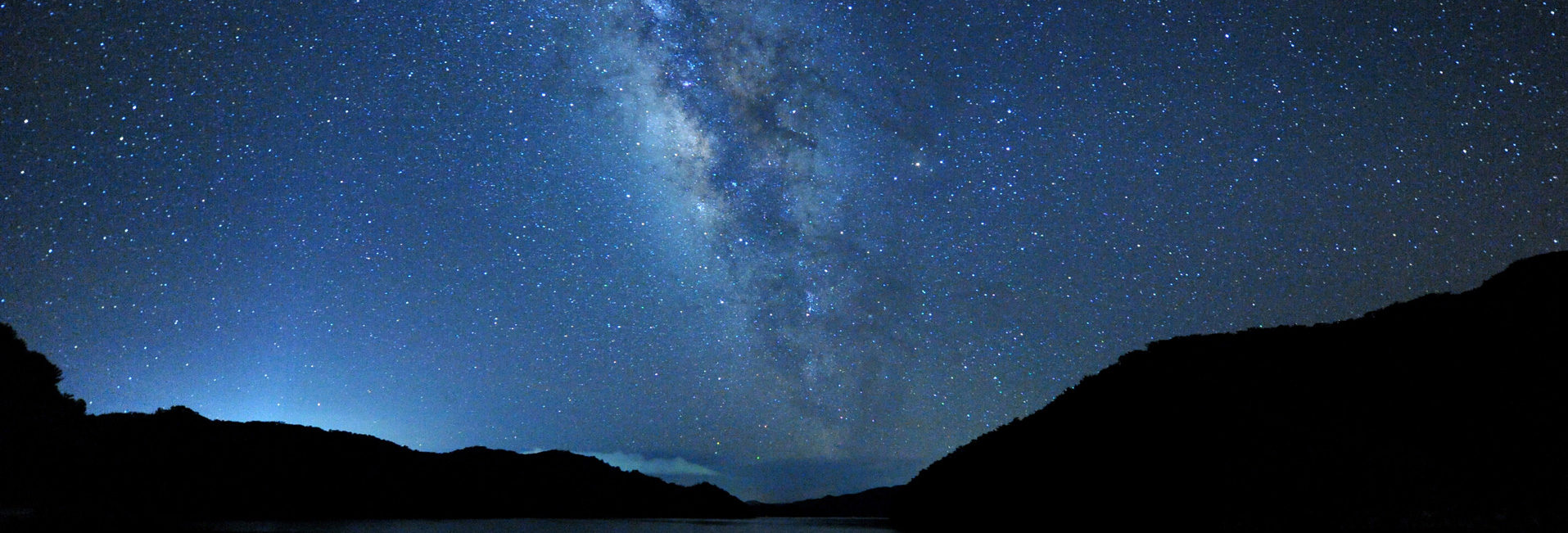
Column
Isshiki Jiro
“Seigenki” Monument in China Town, Okinoerabu Island
The setting of his novelrepresents reminiscence and nostalgia.
I must write. Without writing, I shall not live.” (From Hidarite no Nikki (A Left-handed Diary)
There was a author from Okinoerabu who had kept writing because he was obsessed. His name was Isshiki Jiro (Real name: Oya Sukekatsu) and he was born in 1915 (5th year of the Taisho era). His father died in prison when he was 3 years old. It was in the summer of 5th grade when Jiro had finally met his separated- mother, who was being chased by her in-laws. As his mother was suffering with tuberculosis in Osaka, they moved to live together on Okinoerabujima, an island made from a raised coral reef, located about 550 km (341 miles) south of Kagoshima prefecture.
His mother died six months after that and he was taken in by the second wife of his grandfather in Kagoshima. Because he was often working at food stalls or peddling, he had to drop out of high school. While he was frequently moving from place to place for work, he set his sights on becoming a writer.
After he moved to Tokyo in 1937 (12th year of the Showa era), he worked on an autobiographical novel called Seigenki, whose story is about a boy carrying reminiscences and nostalgia for his mother within his heart as he goes to his mother’s funeral. It won the 3rd Dazai Osamu Award in 1967.
One of the members of the selection committee, literary critic Mitsuo Nakamura, commented, “Although it is too idealistic and idyllic, the image of his mother, which is deeply rooted in the author’s heart, beautifully channels a deep sense of nostalgia.” After that, Okinoerabujima became well-known throughout all of Japan.
There was one person, a famous movie cameraman named Narushima Toichirou, who was impressed with Isshiki’s novel. Narushima aspired to direct the Seigenki movie. He also doubled as a scriptwriter and as a cinematographer. As his first directorial work, he set out to reproduce the novel truthfully in the movie. The movie was released in 1973. The beautiful images of island and the tragic story between a mother and child moved people all over Japan. The movie was also released overseas and became a success.
On the other hand, there was an incident on the island, which involved Isshiki’s father, that drove Jiro Isshiki throughout his life. The youth group of a Japanese gang was afraid of the leader, so they killed him as a form of punishment. Although he was not at the scene, Isshiki’s father was imprisoned with the group of nine youths and died there at the age of 22. It was said that two members of the group were innocent. To investigate this absurdity, Isshiki produced the works Taiyo To Kusari (The Sun and Chain) and Chichi Yo, Anata Wa Mujitsu Datta (Father, You Were Innocent). In his later years, Isshiki also became a leader of the movement to abolish the death penalty.
“He was an imaginary boy who still wrote, even in the face of adversity.”
– An excerpt from Ai no Fudo to Jinsei (The Climate of Love and Life).
His novel was serialized in the Kagoshima Asahi Newspaper (currently the Minami Nippon Shimbun) at the age of 20. Isshiki was nominated for the Naoki Prize twice after moving to Tokyo. His journal that he wrote during the war, Tokyo Daikuushuu – Sensaishi (Tokyo Air Raid – War Damage Magazine) received the Kikuchi Hiroshi Prize. Isshiki also worked on children’s books and his book Sangosho ni Tobidase (Jump Out of the Coral Reefs) was awarded the Sankei Children’s Book Award.
Isshiki left a diverse mark on Japanese literature and recently people are calling for a reappraisal of his works. I certainly look forward to hearing that.
Posted on Minami Nihon Shinbun ”Southern Kyushu Bungaku no Ishibumi(Monument of Literiture)” August 5th, 2023
Referenced works by Isshiki Jiro:
“Taiyo To Kusari (The Sun and Chain)” Published by Kawade Shobo, 1964.
“Seigenki ”Published by Chikuma Shobo, 1967.
“Ai no Fudo to Jinsei – Furusato Nikki (The Climate of Love and Life – Hometown Journal)” Published by Nihon Bungeisha, 1973.
“Migite no Nikki (Left-handed Journal)” Published by Oubunsha Bunko, 1975.
Movie pamphlet for“Seigenki” Toho, 1973.
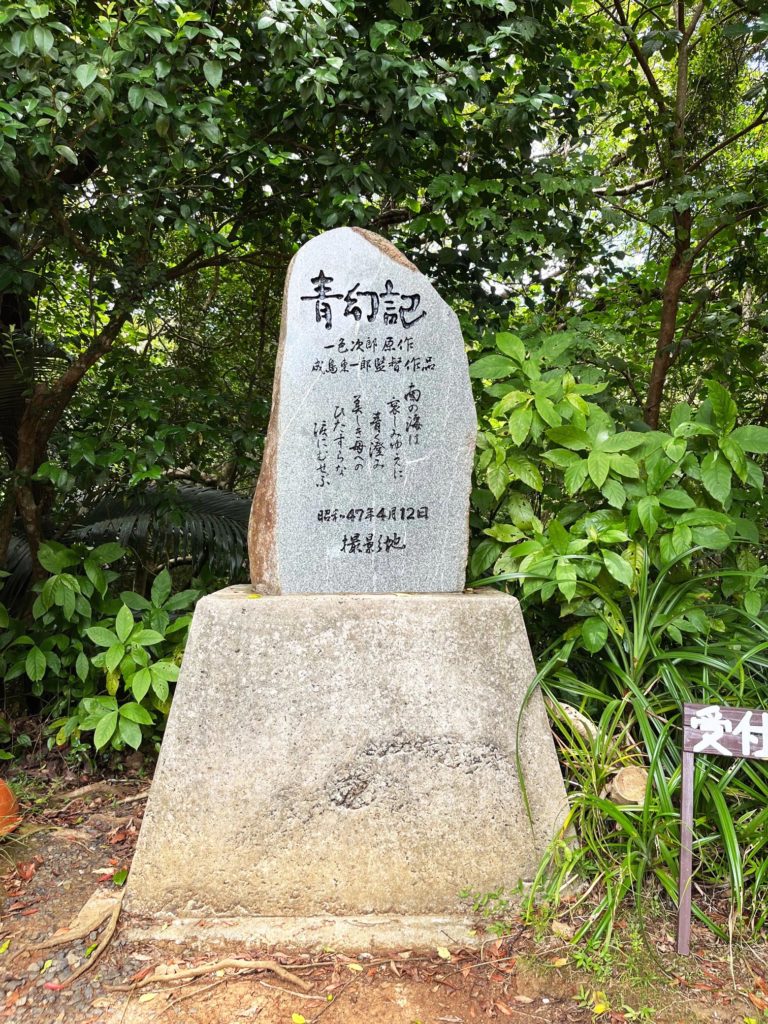
The monument is located in front of Shoryudo, a limestone cave that served as a filming location and is also a Kagoshima Prefecture designated natural monument. Local businesspeople who manage the facility built the monument in 2002. China-cho, Sumiyoshi, Okinoerabu.
